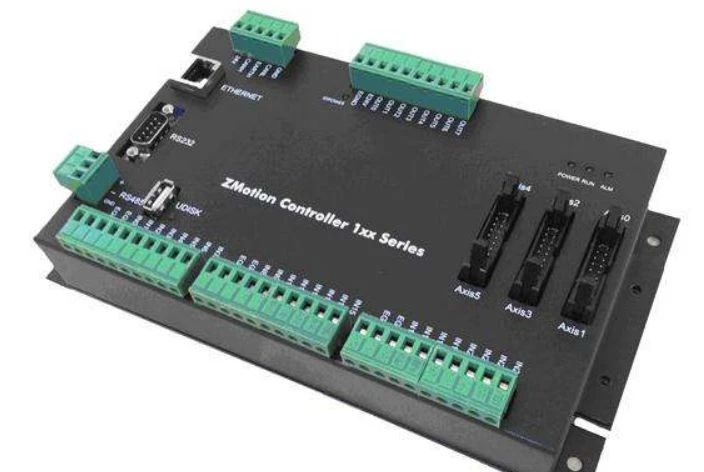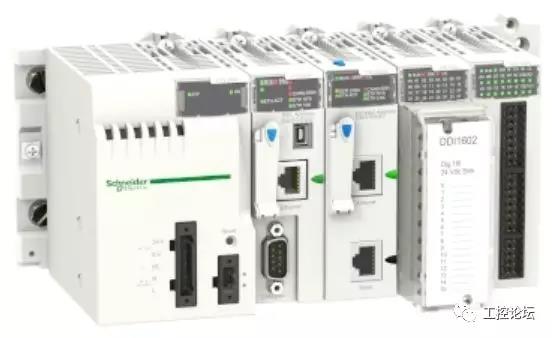Do you really know the essential difference between a motion controller and a PLC?
What is a motion controller?
The motion controller is the special controller that controls the operation of the motor. For example, the motor is controlled by the travel switch AC contactor and the motor drags the object to run towards the specified position and then runs down. Or use a time relay to control the motor is reversing or turning for a while and then turning and stopping again. Motion control applications in the field of robots and CNC machines are more complex than in specialized machines. Because the latter movement form is simpler, often referred to as General Motion Control (GMC)

Features of motion controllers
Point motion control: That is, only the end position is required, independent of the intermediate process of motion, i.e. the trajectory of motion. The corresponding motion controller requires a fast positioning speed, using different acceleration and deceleration control strategies in the acceleration and deceleration segments of motion. In order to enable the system to accelerate to the set speed quickly, the system gain and increase acceleration are often advanced, and the control strategy of s-curve deceleration is adopted at the end of the deceleration. In order to prevent the system in place after vibration, planning in place, will be appropriate to reduce the gain of the system. Therefore, the point motion controller often has the ability to control parameters and variable and deceleration curves in-line.
Continuous Track Motion Control:This control, also known as contour control, is mainly used in the traditional numerical control system, cutting system of motion contour control. The corresponding motion controller to solve the problem is how to make the system in the case of high-speed motion, not only to ensure the accuracy of the contour of the system machining, but also to ensure that the tool along the contour movement of the cutting speed is constant. Multiple program pre-processing functions when processing small segments.
Synchronous motion control: Refers to the motion coordination control between multiple axes, which can be synchronized by multiple axes throughout the motion, or local speed synchronization in the course of motion, which is mainly used in the system control that requires electronic gearbox and electronic cam function. Industry has printing and dyeing, printing, paper, rolling steel, synchronous shearing and other industries. The control algorithm of the corresponding motion controller often uses adaptive feed-forward control, which automatically adjusts the amplitude and phase of the control amount to ensure that the control function is equal to the interference amplitude and the phase opposite to the intake end, so as to suppress the periodic interference and ensure the synchronous control of the system.
What is a PLC?
Programmable logic controller is a digital computing electronic system designed for application in industrial environments. It uses a programmable memory that stores instructions for logical operations, sequential control, timing, counting, and arithmetic operations in its internal storage to control various types of machinery or production processes through digital or analog inputs and outputs.

Features of PLC
(1) High reliability. Because most PLCs use single-chip microcomputers, so the high degree of integration, coupled with the corresponding protection circuit and self-diagnosis functions, improve the reliability of the system.
(2) Programming is easy. PLC programming more use relay control ladder chart and command statement, the number of its than the micromachine instructions is much less, in addition to medium and high-grade PLC, the general small PLC only about 16. Because the ladder image is simple, it is easy to master, easy to use, and even computer expertise is required to program
(3) The configuration is flexible. Due to the PLC's building block structure, the user needs to simply combine the flexibility to change the function and size of the control system, so it can be used in any control system
(4) The input/output function is fully functional. One of the greatest advantages of a PLC is that it is directly connected to devices in the industrial field (e.g. buttons, switches, sensing current transmitters, motor starters or control valves) and to the CPU motherboard via a bus for different field signals (e.g. DC or AC, switching, digital or analog, voltage or current).
(5) Easy to install. Compared with computer systems, PLC installation requires neither a dedicated room nor strict shielding measures. When used, simply connect the detection device to the I/O interface terminals of the actuator and PLC to work properly.
(6) It runs fast. Since plc control is performed by program control, it is not comparable to relay logic control regardless of reliability or operating speed. In recent years, the use of microprocessors, especially with the large number of microcontrollers, greatly enhanced the capacity of PLC, and make the difference between PLC and microcomputer control system is becoming smaller and smaller, especially high-grade PLC.
The difference between motion controller and PLC
Motion control mainly involves the control of stepper motors and servo motors, and the control structure mode is generally: motion controller and (stepper or servo) driver and (step or servo) motors. The control unit can be a PLC system or a dedicated automation unit (e.g. motion controller, motion control card). PLC system as a control device, although the PLC system has the flexibility, a certain generality, but for the accuracy of high, such as - interpolating control, responsive requirements difficult to do or programming is very difficult, and the cost may be high. With the progress of technology and the accumulation of technology, motion controller sins in some universal, special motion control functions - such as interpolation instructions, users only need to form, call these function blocks or instructions, which reduces programming difficulty. Performance and cost also have advantages. It can also be understood that the use of PLC is a common motion control device. Motion controller is a special PLC, dedicated to motion control.
